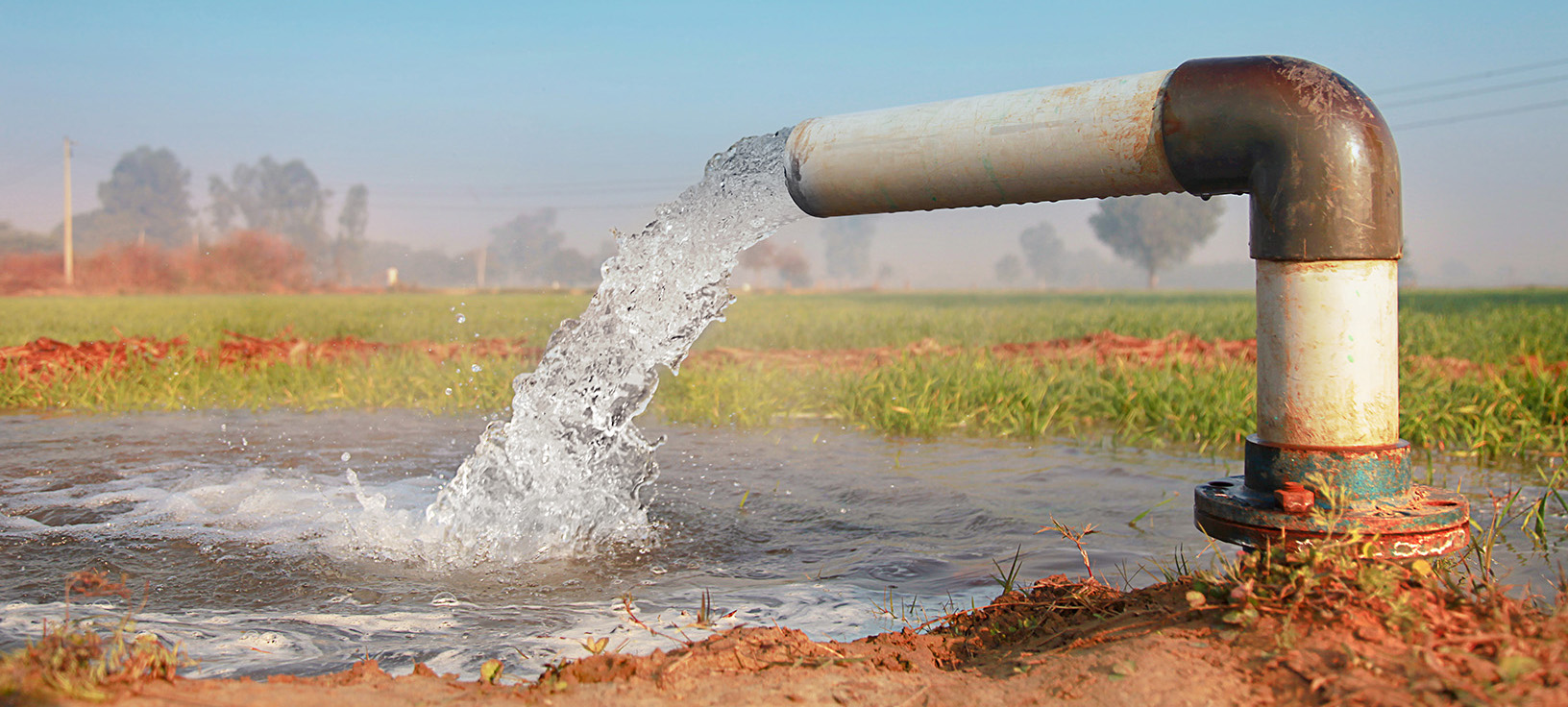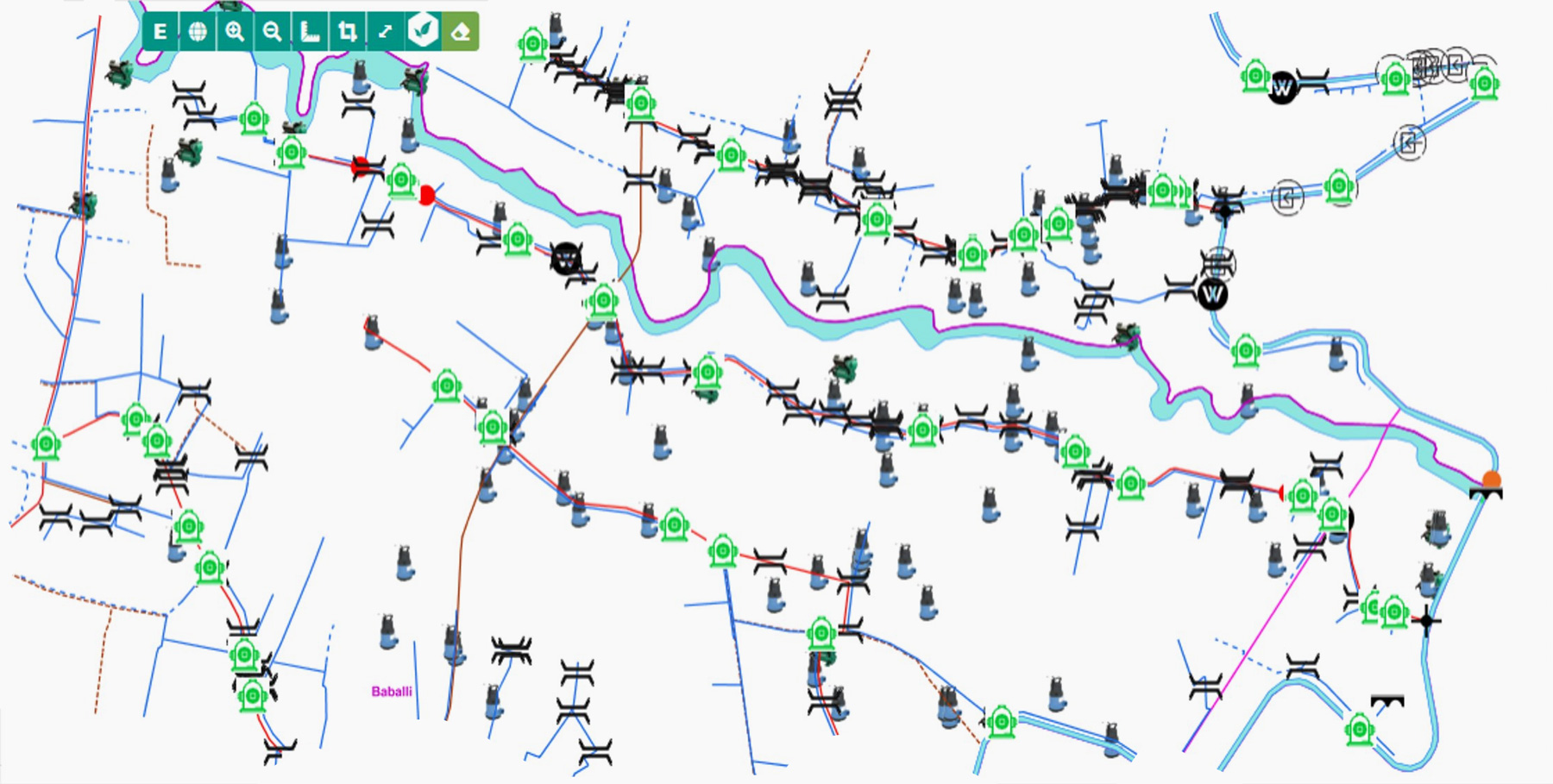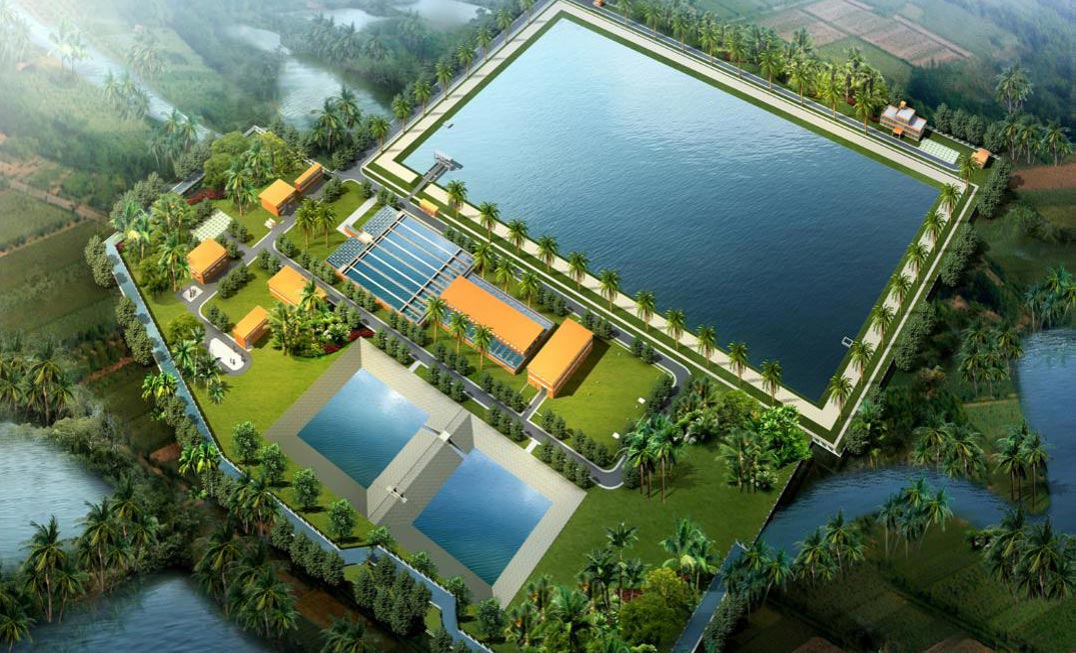
Modernising a 100-year-old irrigation system
Fed by the Bhadra River, the Gondi Irrigation System is made up of an anicut, canals and connecting channels built nearly 100 years ago. The channels were in poor condition, with water flow blocked by vegetation and sediment. Large quantities of water were being wasted, while some parts of the network were causing inundation or overflow, resulting in soil deterioration on adjacent lands. SMEC supported the upgrade of a total of 360km of irrigation channels in the Gondi area.
 A unique aspect of this project is the development and implementation of a community-based geographic information system (GIS) asset management model to ensure that the irrigation assets could be operated and maintained sustainably. The assets mapped in the database cover the entire rehabilitated canal network, including the main, distributary and field irrigation channels (FICs) along with structures such as pipe outlets, cattle ramps, relieving weirs, escape sluices, cross drainage works and cart track crossings. This database not only assists in managing and maintaining the irrigation assets but also estimates the quantity of water needed for crops based on crop data. Having accurate information about how much water is needed and where means that farmers can adapt their practices to be more strategic about when and how they use their water allocation.
A unique aspect of this project is the development and implementation of a community-based geographic information system (GIS) asset management model to ensure that the irrigation assets could be operated and maintained sustainably. The assets mapped in the database cover the entire rehabilitated canal network, including the main, distributary and field irrigation channels (FICs) along with structures such as pipe outlets, cattle ramps, relieving weirs, escape sluices, cross drainage works and cart track crossings. This database not only assists in managing and maintaining the irrigation assets but also estimates the quantity of water needed for crops based on crop data. Having accurate information about how much water is needed and where means that farmers can adapt their practices to be more strategic about when and how they use their water allocation.
Mapping crops and Assets
 A community-based approach
A community-based approach
Our teams helped local farming communities to form Water User Cooperative Societies (WUCS). These groups received training on the management of the modernised irrigation systems, as well as construction and maintenance of field irrigation channels. Passing on the knowledge and capabilities required to operate these systems was a key objective of the project, particularly for marginalised communities within the areas serviced by the irrigation network.
The community program also had a strong focus on female empowerment. Women made up 40-50% of participants in training and site visits conducted by the WUCS, and 22 women-only sub committees were formed with 347 members within the societies. In a country where women do not necessarily have the same access to opportunities as men, it was essential to develop the skills of local women so that they can then support their families and communities.
Process Flow – Asset Management
 Working with Pixelsoftek, SMEC also developed a smartphone-based application to help a few select farmers from each WUCS to capture and update crop and farmland data, including changes in land ownership, on the GIS asset management system. By entering a few details in a user-friendly report form and uploading a photo, farmers can also use the app to identify and seek approval from local authorities for any critical repairs. This ensures that the system is kept up to date and that operational processes are as efficient as possible.
Working with Pixelsoftek, SMEC also developed a smartphone-based application to help a few select farmers from each WUCS to capture and update crop and farmland data, including changes in land ownership, on the GIS asset management system. By entering a few details in a user-friendly report form and uploading a photo, farmers can also use the app to identify and seek approval from local authorities for any critical repairs. This ensures that the system is kept up to date and that operational processes are as efficient as possible.
Far-reaching benefits
Improving irrigation efficiency in Karnataka is expected to save around 1.7 billion cubic metres of water for use on an additional 160,000 hectares of farmland. Annual farm incomes are also projected to rise by as much as 50% for some marginal households because of increased crop production, and about 1.5 million people stand to benefit overall.
The Asian Development Bank (ADB) invited SMEC and partners to present the social and technological aspects of the Gondi Irrigation System project at the 3rd World Irrigation Forum held in September 2019 in Bali, Indonesia. The session drew significant interest from the audience, so much so that the ADB, which partially funded the project, is considering adapting these methods to other projects. The Karnataka Government is also in discussions with project team leaders about how to scale up this approach. The success of the program demonstrates the difference we can make when our specialist teams work together with local communities, committed partners and digital technology to deliver innovative solutions.
Related
insights
 Water project brings life to people of Khulna
Water project brings life to people of Khulna
The Khulna Water Supply Project in Bangladesh has connected 90 per cent of the city’s residents – up from 23 per cent – to safe drinking water.
 Why BIM is simply Business as Usual
Why BIM is simply Business as Usual
While Building Information Modelling (BIM) has been around for more than a decade, it’s only in the last five years that we began to focus on this technology as it was still relatively new in the infrastructure market.
 A recipe for success
A recipe for success
If I wasn’t working in engineering, I would definitely be a chef – probably on my way to earning a Michelin star or two!
 Dohazari to Cox's Bazar Railway project, Bangladesh reaps benefits of site safety culture
Dohazari to Cox's Bazar Railway project, Bangladesh reaps benefits of site safety culture
Health and safety should be an integral part of businesses, of all shapes, and sizes. At SMEC it is imperative that we protect the well-being of people associated with our company, whether on-site or in the office.




